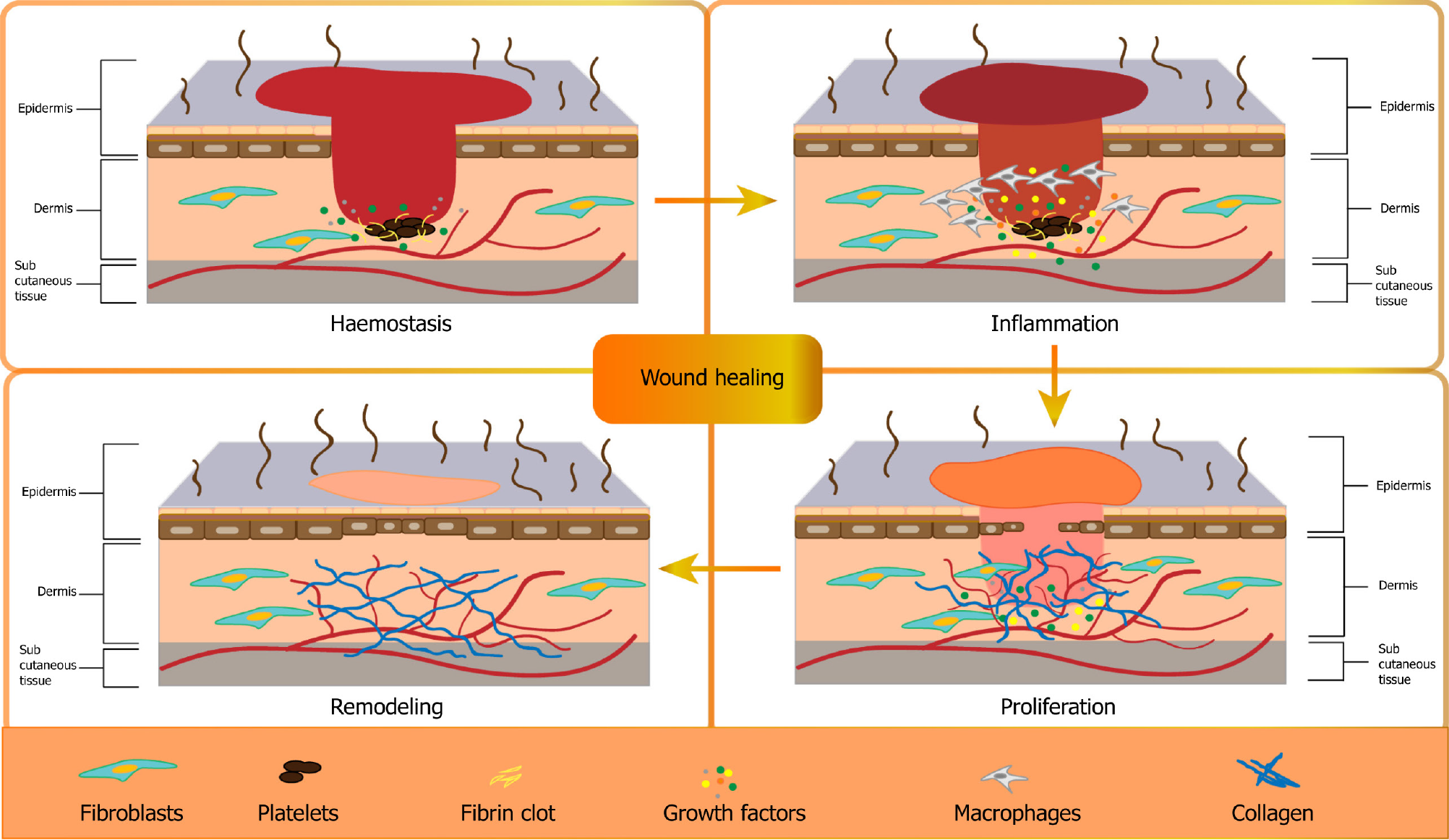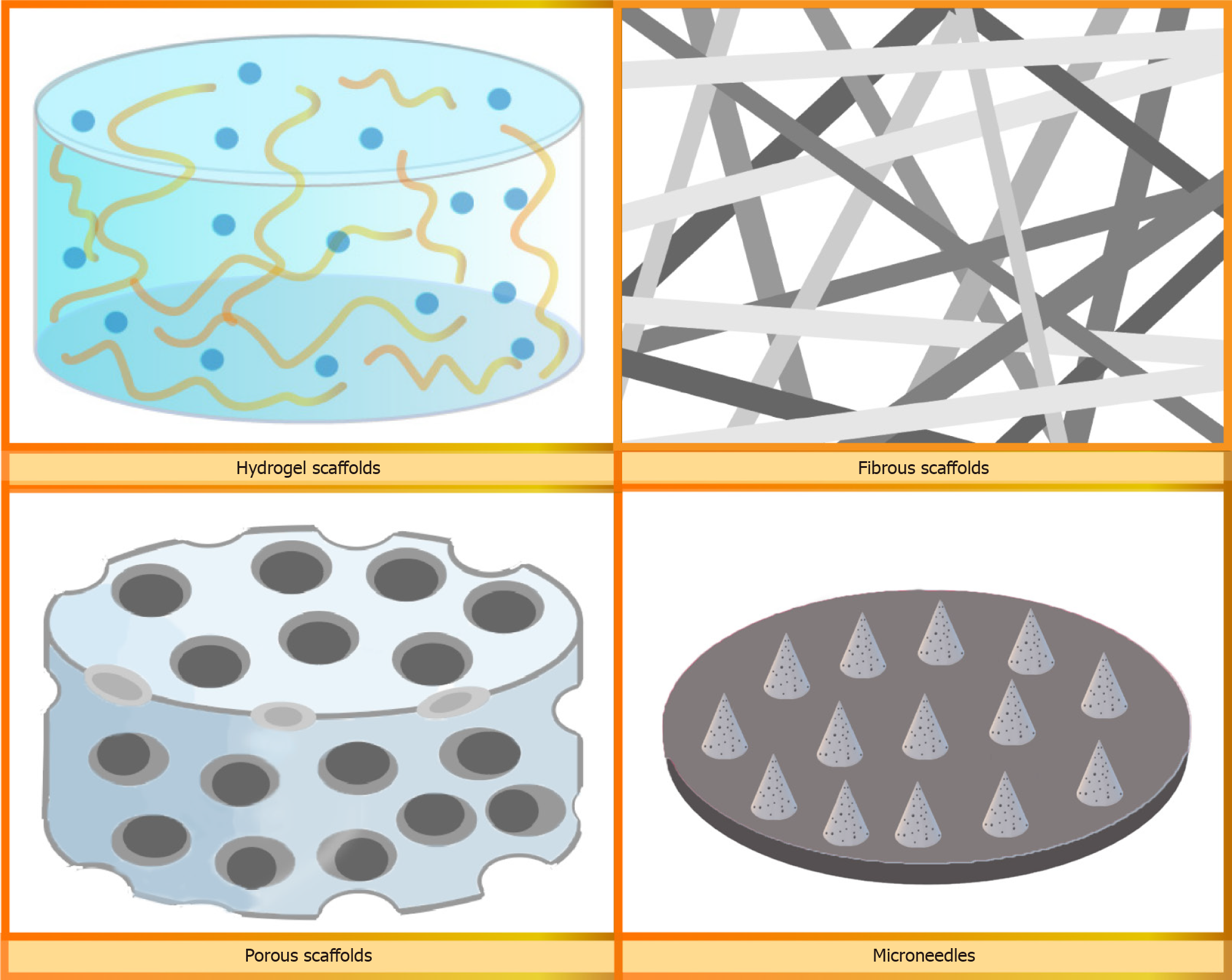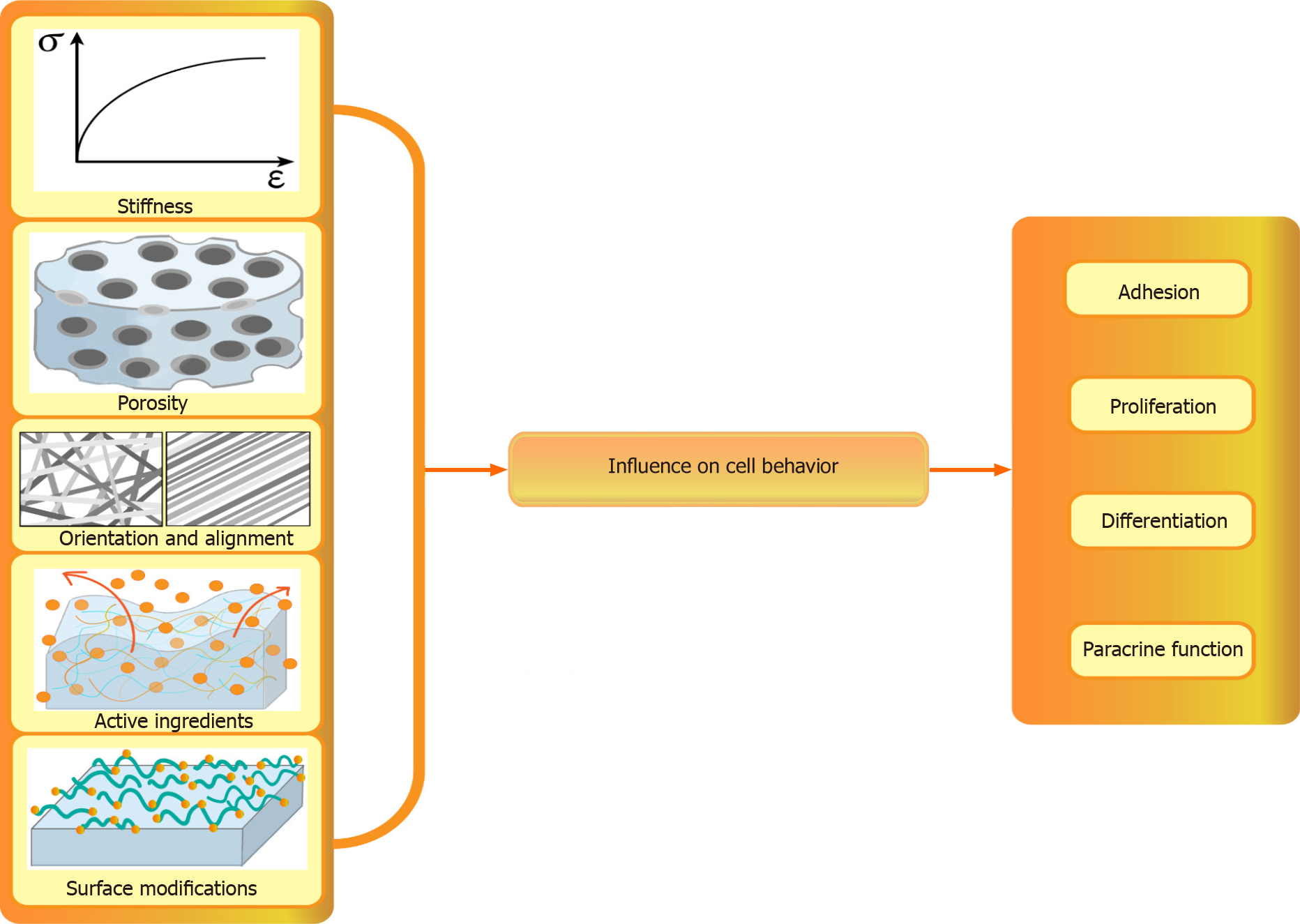Copyright
©The Author(s) 2024.
World J Stem Cells. Apr 26, 2024; 16(4): 334-352
Published online Apr 26, 2024. doi: 10.4252/wjsc.v16.i4.334
Published online Apr 26, 2024. doi: 10.4252/wjsc.v16.i4.334
Figure 1 Wound healing process.
Phases of wound healing including hemostasis, inflammation, proliferation, and remodeling.
Figure 2 Types of different polymer scaffolds.
Different types of polymer scaffolds including hydrogel scaffolds, fibrous scaffolds, porous scaffolds and microneedles.
Figure 3 Cellular response to biomaterial microenvironment.
Biomaterials with characteristics of stiffness, porosity, orientation, active ingredients and surface modifications. These microenvironmental cues have the ability to influence cell adhesion, proliferation, differentiation, and paracrine function.
- Citation: Xiang JY, Kang L, Li ZM, Tseng SL, Wang LQ, Li TH, Li ZJ, Huang JZ, Yu NZ, Long X. Biological scaffold as potential platforms for stem cells: Current development and applications in wound healing. World J Stem Cells 2024; 16(4): 334-352
- URL: https://www.wjgnet.com/1948-0210/full/v16/i4/334.htm
- DOI: https://dx.doi.org/10.4252/wjsc.v16.i4.334















